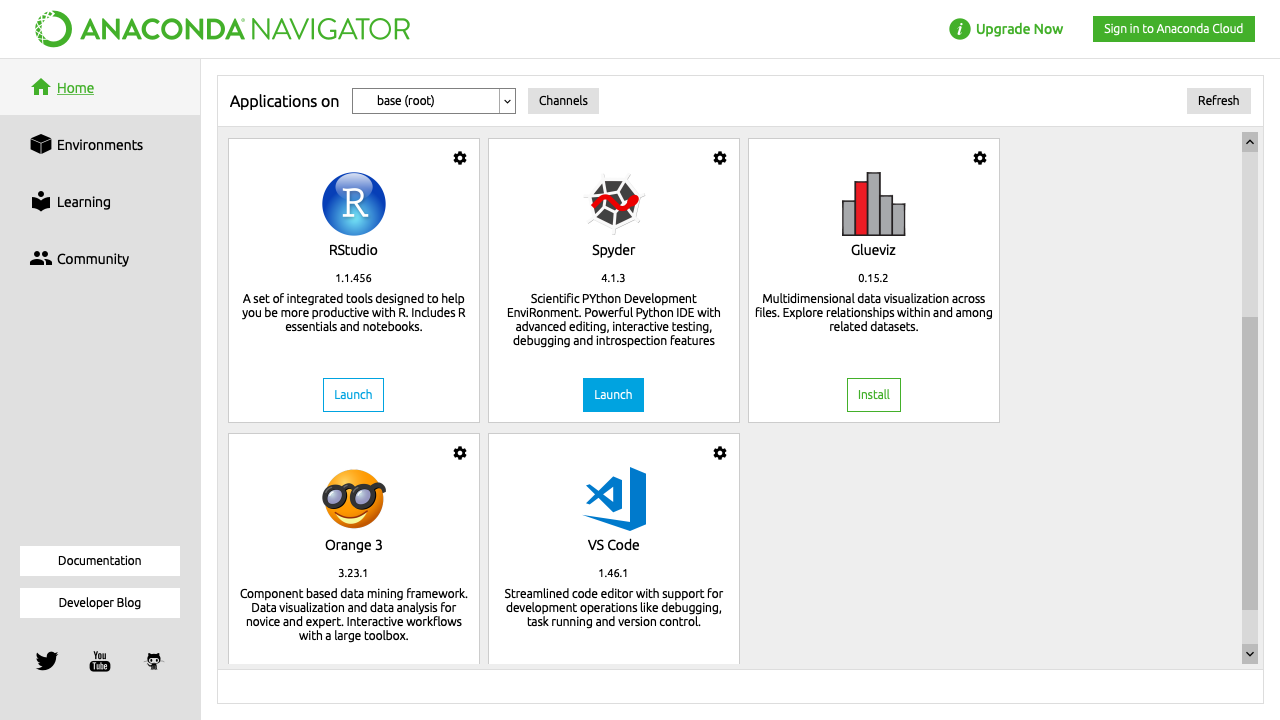

- ANACONDA PYTHON PYQT5 HOW TO
- ANACONDA PYTHON PYQT5 INSTALL
- ANACONDA PYTHON PYQT5 SOFTWARE
- ANACONDA PYTHON PYQT5 WINDOWS
ANACONDA PYTHON PYQT5 SOFTWARE
Programming language, machine learning, data scienceįreemium (Miniconda and the Individual Edition are free software, but the other editions are software as a service) Īnaconda is a distribution of the Python and R programming languages for scientific computing ( data science, machine learning applications, large-scale data processing, predictive analytics, etc.), that aims to simplify package management and deployment. The sizeHint() method gives a recommended size for the button./ 17 November 2021 2 months ago ( ) The button is being resized and moved on the window. We create a push button widget and set a tooltip for it. To create a tooltip, we call the setTooltip() method. This static method sets a font used to render tooltips. tToolTip('This is a QWidget widget')ītn.setToolTip('This is a QPushButton widget')Īnalysis tFont(QFont('SansSerif', 10)) Options = ,Įxecutables = )įrom PyQt5.QtWidgets import (QWidget, QToolTip,
ANACONDA PYTHON PYQT5 WINDOWS
# GUI applications require a different base on Windows (the default is for a "include_files": # need qwindows.dll for qt5 application # Dependencies are automatically detected, but it might need fine tuning.
ANACONDA PYTHON PYQT5 INSTALL
after install it by pip, to package demo.py, we need setup.py below.

Package your project into excutable/installerĬx_Freeze - a tool can package your project to excutable/installer

The sys.exit() method ensures a clean exit. The mainloop ends if we call the exit() method or the main widget is destroyed. The mainloop receives events from the window system and dispatches them to the application widgets. The event handling starts from this point. sys.exit(app.exec_())įinally, we enter the mainloop of the application. A widget is first created in memory and later shown on the screen. The show() method displays the widget on the screen. The move() method moves the widget to a position on the screen at x=300, y=300 coordinates. A widget with no parent is called a window. We provide the default constructor for QWidget. The QWidget widget is the base class of all user interface objects in PyQt5. Python scripts can be run from the shell. The sys.argv parameter is a list of arguments from a command line. import sysĮvery PyQt5 application must create an application object.
ANACONDA PYTHON PYQT5 HOW TO
It also shows how to connect a signal to a slot, so that clicking the button adds some text to the line-edit. This example creates a simple window with a button and a line-edit in a layout. The application and example objects are created. The QIcon receives the path to our icon to be displayed. To do this, we have created a QIcon object. The last method sets the application icon. In fact, it combines the resize() and move() methods in one method. The third is the width and the fourth is the height of the window. The first two parameters are the x and y positions of the window. The setGeometry() does two things: it locates the window on the screen and sets it size. tGeometry(300, 300, 300, 220)Īll three methods have been inherited from the QWidget class. The creation of the GUI is delegated to the initUI() method. While in class A it's an instance attribute. Yes, it's a class attribute (it is shared between instances).

The self variable refers to the object itself.ĭoes this mean that x in class B is established before instantiation? The super() method returns the parent object of the Example class and we call its constructor. This means that we call two constructors: the first one for the Example class and the second one for the inherited class. The Example class inherits from the QWidget class. Here we create a new class called Example. Three important things in object oriented programming are classes, data, and methods. KeywordArg( role = "Manager", name = "Tom") KeywordArg( name = "Tom", role = "Manager") In Python, user-defined functions can take four different types of arguments. Adding an application icon import sysįrom PyQt5.QtWidgets import QApplication, QWidget Since the Documentation for pyqt5 is new, you may need to create initial versions of those related topics. It should also mention any large subjects within pyqt5, and link out to the related topics. This section provides an overview of what pyqt5 is, and why a developer might want to use it.


 0 kommentar(er)
0 kommentar(er)
